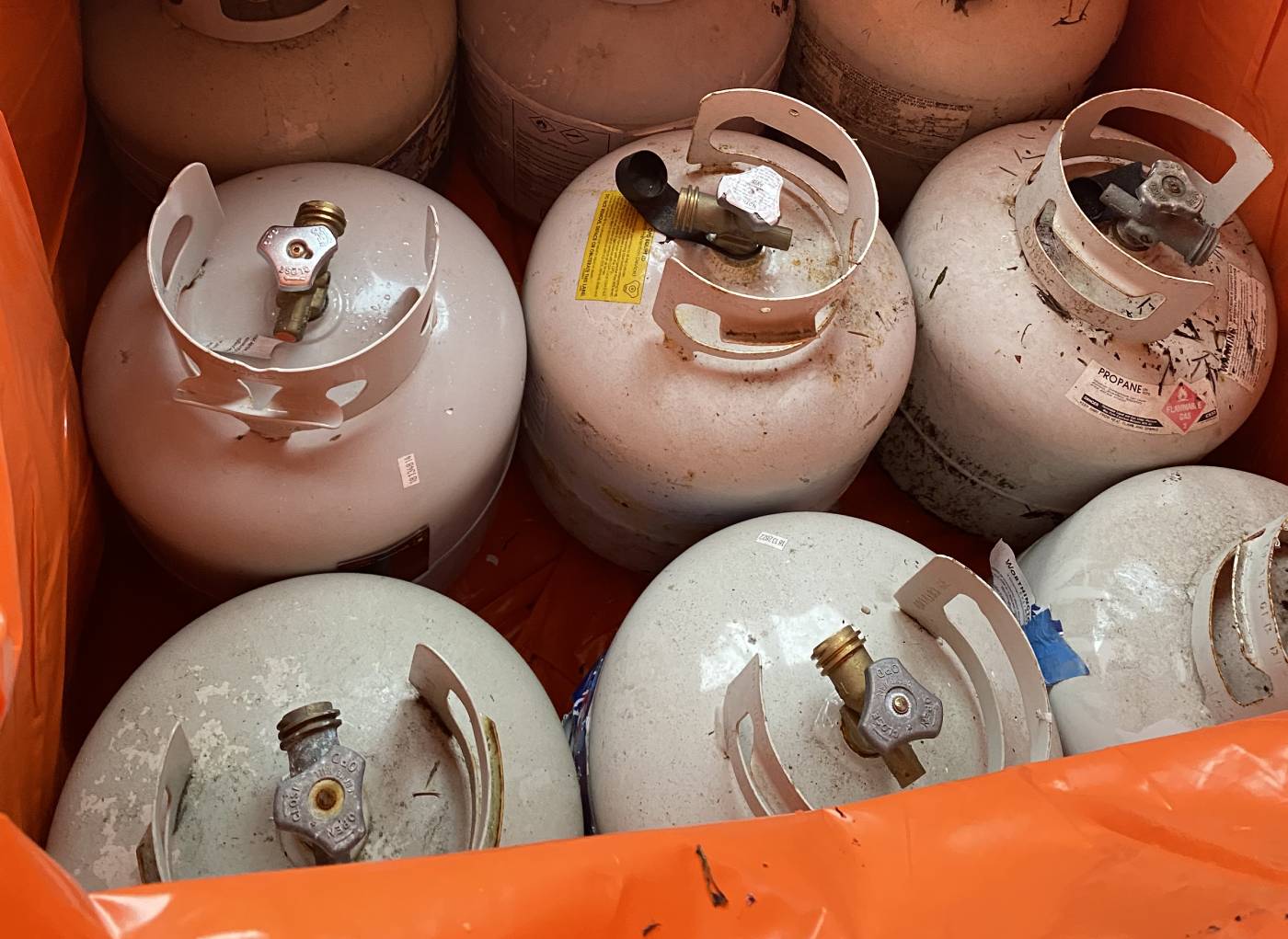Propane safety 101: What to do with your tank after summer

Now that Labor Day has passed and the grills are cooling down, it’s a great time to check in on your propane tanks. Propane is considered hazardous due to its flammability, potential for explosion, and its ability to displace oxygen, which can lead to breathing problems. Whether they’re empty, half-full, or expired, here’s how to handle propane tanks safely and responsibly.
Tip 1: Take unwanted or damaged propane tanks to a hazardous waste collection facility near you
Visit one of our hazardous waste collection facilities to safely drop off expired, damaged, or unwanted propane tanks. It’s free for King County residents and helps keep our community safe.
Here are a few important guidelines to follow:
- Only bring containers 8 gallons or smaller.
- Limit 5 tanks per trip.
- Larger propane tanks (over 8 gallons) should be returned to the manufacturer or to a Blue Rhino location.
Important: Transfer stations in King County do not accept propane tanks of any size. Hazardous waste facilities will accept empty or partially filled tanks that are expired, damaged, or rusted.
Tip 2: Check how much propane is left
Partially filled propane tanks are prone to leaks and can create fire or explosion hazards when not stored properly. Avoid these risks by using this quick DIY method to check how much propane is left in your tanks.
What You’ll Need:
- A propane tank
- A bathroom scale
- A calculator (or your phone!)
Step-by-step:
- Weigh the tank on a bathroom scale and note the total weight.
- Find the tare weight (TW) stamped on the collar of the tank. This is the weight of the empty tank. Most 20-pound tanks have a TW around 17 lbs.
- Calculate the fuel weight: Fuel weight = Total weight – Tare weight
If the numbers are equal, your tank is empty.
Pro Tip: Want to skip the math? Use a propane gauge with a built-in display for instant results.
By checking how much propane is remaining, you can determine how to best store or dispose of your propane tanks. Don’t forget, empty or partially filled tanks (8 gallons or less), can be taken to a hazardous waste collection facility.
Tip 3: Don’t use expired tanks
Using expired tanks can be dangerous. Propane tanks have safety features like overfill protection and pressure release valves that degrade over time.
What to do if you gave an expired tank:
- Exchange your tank: Take your tank to a location that has a tank exchange. Many grocery stores, hardware stores, and gas stations in King County partner with Blue Rhino or AmeriGas to offer tank swaps. You can use the Blue Rhino Propane Finder or AmeriGas’s Seattle service page to locate nearby exchange locations. AmeriGas also offers home delivery and replacement.
- Privately owned tanks:
- Option 1: Take it to a refill station and pay to have the valve and components replaced.
- Option 2: Bring it to a King County Hazardous Waste Collection Facility.
Tip 4: Store tanks safely
Propane tanks should be stored upright and should be kept:
- Outdoors in a cool, dry, well-ventilated area.
- Out of direct sunlight.
- Away from devices with pilot lights and open flames, such as AC units, pool heaters, or fire pits.
Tanks can release propane if temperatures reach 110–120°F. Proper storage helps prevent leaks and explosions. It’s best not to keep several half-full propane tanks in storage, either. Over time, they’re more prone to leaking.
As summer winds down, protect your family and home. Use these tips to store, use, and dispose of propane tanks safely and securely.

 Translate
Translate